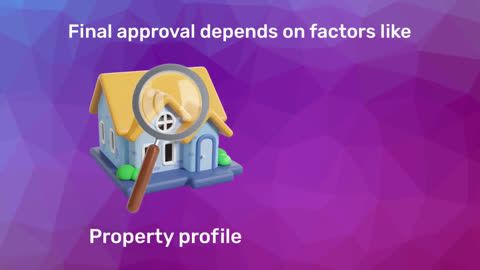RPLR meaning: The basics
RPLR stands for Retail Prime Lending Rate. It is the benchmark interest rate that banks and financial institutions use as a reference point when determining the interest rate for various retail loans, including home loans. Essentially, RPLR is the rate at which banks lend to their most creditworthy customers, often large corporations or individuals with excellent credit histories.While this may seem straightforward, it's important to note that RPLR is not a fixed rate. Instead, it can fluctuate based on changes in the economic environment, such as changes in the repo rate set by the Reserve Bank of India (RBI). The RPLR serves as a base rate, and other interest rates for various loans are typically calculated by adding a margin or spread to the RPLR.
How RPLR affects your home loan
Now that you understand the meaning of RPLR, let's explore how it affects your home loan. When you apply for a home loan, the interest rate you are offered is usually expressed as RPLR plus a margin. For example, if the RPLR is 15% and the margin is 3%, your effective interest rate would be 18%.The RPLR is crucial because it directly influences the cost of borrowing. If the RPLR increases, the interest rate on your home loan will likely increase as well, leading to higher Equated Monthly Instalments (EMIs). Conversely, if the RPLR decreases, you might enjoy lower EMIs.
RPLR vs. MCLR: What’s the difference?
While RPLR is widely used, it's essential to distinguish it from another term you might encounter: MCLR, or Marginal Cost of Funds Based Lending Rate. MCLR is another benchmark rate, but it's calculated differently. MCLR takes into account the marginal cost of funds, operating costs, and other factors, and it is typically used for newer loans.The key difference between RPLR and MCLR is that MCLR is more dynamic and often changes more frequently than RPLR. This is because MCLR is closely linked to the repo rate, which is subject to frequent revisions by the RBI. On the other hand, RPLR might remain stable for more extended periods, making it a slightly less volatile benchmark for loans.
The impact of RPLR on different funding options
Apart from home loans, RPLR affects a variety of financial products:- Personal loans: Personal loans often come with higher interest rates compared to secured loans like home loans. If the RPLR increases, you might find the interest rates on personal loans rising too, making them more expensive.
- Car loans: Like home loans, car loans are also influenced by the RPLR. A higher RPLR could mean higher monthly payments on your car loan, while a lower RPLR could make it more affordable to finance a vehicle.
- Credit cards: While credit card interest rates are generally high, they can also be influenced by changes in the RPLR. An increase in RPLR could lead to higher interest rates on outstanding credit card balances.
How RPLR is determined
Understanding how RPLR is determined can help you better anticipate changes in your loan interest rates. Banks and financial institutions set their RPLR based on various factors:1. Repo rate: The repo rate, set by the RBI, plays a significant role in determining RPLR. When the RBI raises the repo rate, borrowing becomes more expensive for banks, which often pass this cost onto consumers by raising the RPLR.
2. Market conditions: The overall demand and supply of credit in the market can also influence the RPLR. In a high-demand environment, banks may increase their RPLR to manage the flow of credit.
3. Cost of funds: The cost at which banks can borrow money themselves impacts the RPLR. If it becomes more expensive for banks to acquire funds, they may increase the RPLR to maintain their profit margins.
4. Bank’s operating costs: The operating costs of a bank, including overheads and administrative expenses, can also influence the RPLR. Higher operating costs may lead to a higher RPLR.
Why RPLR matters to you
Understanding the RPLR meaning and its implications can empower you to make more informed financial decisions. Whether you are looking to take out a home loan, car loan, or personal loan, knowing the RPLR can help you anticipate changes in your interest rate and plan your finances accordingly.For instance, if you're planning to buy a home and are considering a home loan, keeping an eye on the RPLR can give you insights into when might be the best time to apply. A lower RPLR could mean lower interest rates, making your dream home more affordable.
Choosing the right home loan for your needs
When choosing a home loan, it's not just about understanding the RPLR; it's also about selecting a lender that offers competitive rates and excellent service. Bajaj Housing Finance, for example, offers home loans with attractive interest rates, flexible repayment options, and a seamless application process.Whether you are buying your first home, constructing a new one, or refinancing an existing loan, Bajaj Housing Finance provides a range of home loan products tailored to meet your needs. With user-friendly home loan calculators, you can quickly determine your potential EMIs, helping you plan your finances better.
Here are a few reasons why you should choose Bajaj Housing Finance Home Loan:
1. Competitive interest rates: Bajaj Housing Finance offers some of the most competitive home loan interest rates in the market, ensuring that your home loan remains affordable throughout its tenure.
2. Flexible repayment options: With flexible repayment options, borrowers can choose a plan that best fits their financial situation, making it easier to manage monthly payments.
3. Quick and easy processing: The application process for a Bajaj Housing Finance Home Loan is streamlined and user-friendly, ensuring quick approval and disbursement.
Explore Bajaj Housing Finance Home Loan today and experience a seamless way to finance your dream home.




